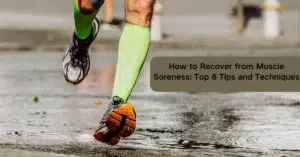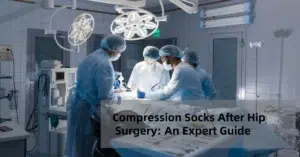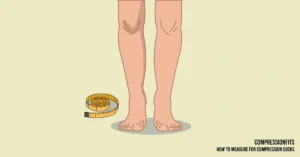The most serious issue patients encounter following surgery is the formation of post-surgical blood clots in the legs due to prolonged bed rest and lack of movement. It can lead to developing a condition known as deep venous thrombosis (DVT), characterized by the formation of blood clots, which can also lead to swelling, skin ulcers, and edema.
Prolonged bed rest and immobilization increase the risk of developing blood clots because of worsened blood circulation. However, these blood clots often lodge within the veins of the legs. Still, they can also dislodge from their site of origin and travel to different body organs, becoming embolus.
The most common organs involved in the embolism of blood clots are the lungs, which can lead to a condition known as pulmonary embolism, which can be severely fatal.
However, wearing post-surgical compression socks can provide relief as they prevent blood clots by improving blood circulation throughout the legs. Their specialized pressure-generating capacity is a great asset to prevent deep venous thrombosis after surgeries.
So, let’s discover the science behind compression socks and post-surgical blood clot prevention and dive into the debate!

Source:https://theconversation.com/bed-rest-in-hospital-can-be-bad-for-you-heres-what-nurses-say-would-help-get-patients-moving-165664
The Science behind Compression Socks and Post-Surgical Blood Clot Prevention
Compression stockings are crucial during post-surgical recovery. They enhance circulation after surgeries, helping to prevent conditions like deep venous thrombosis and pulmonary embolism.
This is because a patient is required to have complete bed rest for a few days after any surgical procedure. This bed rest leads to prolonged immobilization, which causes blood stasis in the legs and impaired venous return to the heart.
Furthermore, blood pooling within the veins of the legs and increased blood volume are known to cause venous hypertension, which also leads to pedal edema. In this way, complete immobilization and bed rest after surgical procedures can interfere with the patient’s blood circulation.
However, compression socks play a crucial role in this case. They are designed with specialized pressure-generating features that prevent blood pooling in the legs, thus improving venous return to the heart.
Besides, Compression socks enhance several other aspects in post-surgical patients, which we will explain in detail in the next section. So, without any further ado, allow us to hop into that!
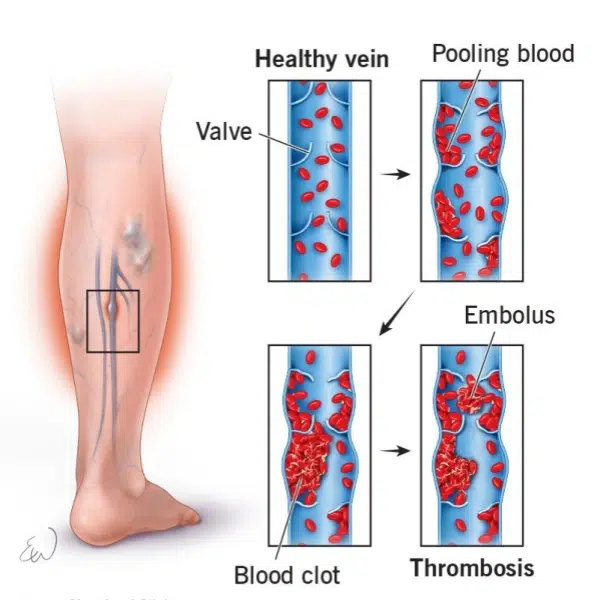
Source:https://my.clevelandclinic.org/health/diseases/16911-deep-vein-thrombosis-dvt
How Compression Socks Combat Post-Surgical Blood Clots?
Compression socks are designed to offer graduated compression. The compression is strongest at the ankle and gradually decreases as it moves up toward the knees. This design helps improve blood flow throughout the legs. Thus, this pressure graduation naturally compels the blood flow from the legs to the heart.
However, let’s look at the detailed mechanism of how compression stockings combat post-surgical blood clots!
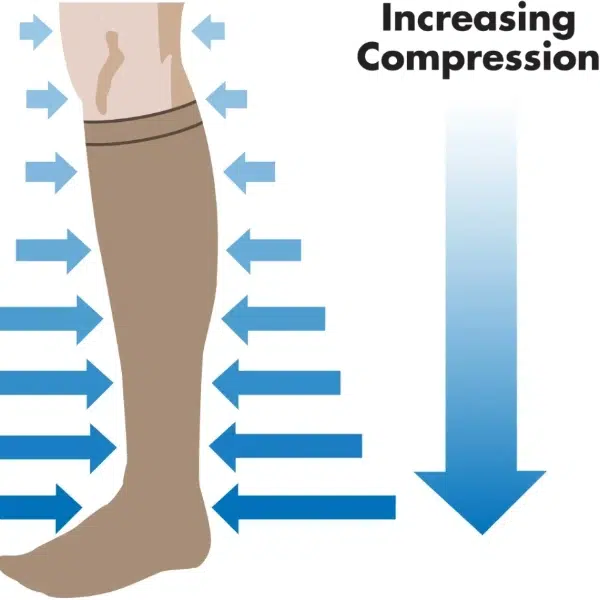
Source:https://www.pebbleuk.com/article/130/do-compression-socks-work/
Enhanced Venous Return after Surgical Procedures
During the post-surgical recovery period, blood circulation in the lower limbs often decreases. This is due to prolonged immobilization from extended bed rest. This compromised venous return from the legs to the heart causes blood to pool and stagnate in the legs. As a result, the risk of blood clot formation increases.
However, compression stockings have a specular quality of graduated pressure generation capacity, which provides the highest pressure at the ankle joint, and the pressure gradually decreases as the sock moves up to the knees.
This pressure gradient is essential for preventing blood stasis in the legs, consequently improving venous return to the heart. In this way, compression socks play a significant role in enhancing venous return and preventing leg pain after surgical procedures.
Combat Post-Surgical Immobility
Compression stockings provide compressive properties to the veins; thus they prevent the stagnation of blood within the veins. In this way, they enhance blood circulation during the post-surgical recovery period, effectively addressing the challenges of post-surgical immobility.
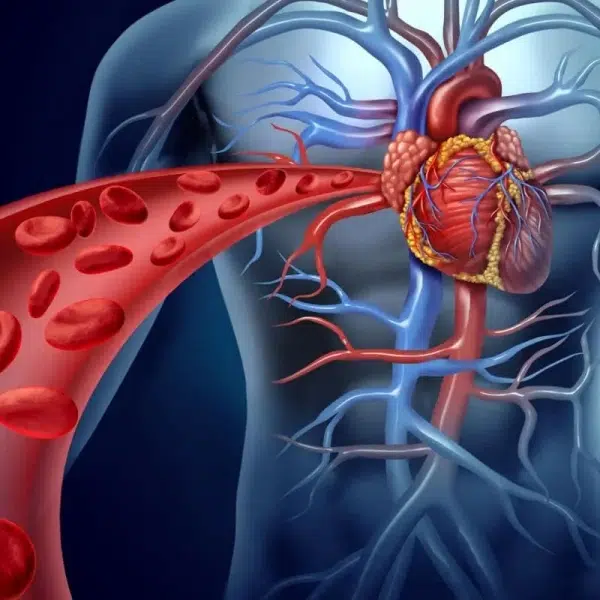
Source:https://lonestarneurology.net/blog/how-to-improve-blood-circulation/
Prevent Venous Stasis and Blood Pooling in the Lower Limbs of Post-Surgical Patients
Blood pooling or stasis is the major cause of deep vein thrombosis that frequently occurs in post-surgical patients due to persistent immobility.
However, compression stockings help to prevent deep vein thrombosis DVT by maintaining continuous blood pressure and flow within the legs, even during hours of immobility. In addition, by promoting blood circulation, they help sustain venous pressure in the legs, which prevents venous hypertension and further reduces the risk of post-surgical blood clots.
Reduced Post-Operative Swelling, Edema, and Fluid Retention
Surgical operations often lead to swelling, edema, and fluid retention within the legs. These factors can interfere with post-surgical blood circulation, thus causing more pressure within the veins, leading to venous hypertension.
Not only this, but the increased venous pressure also disrupts the regular blood flow, which leads to increased risks of developing blood clots.
Compression socks, again with their compressive and pressure-graduation properties, help to alleviate post-operative swelling and edema, subsequently preventing risks of post-surgical blood clots.
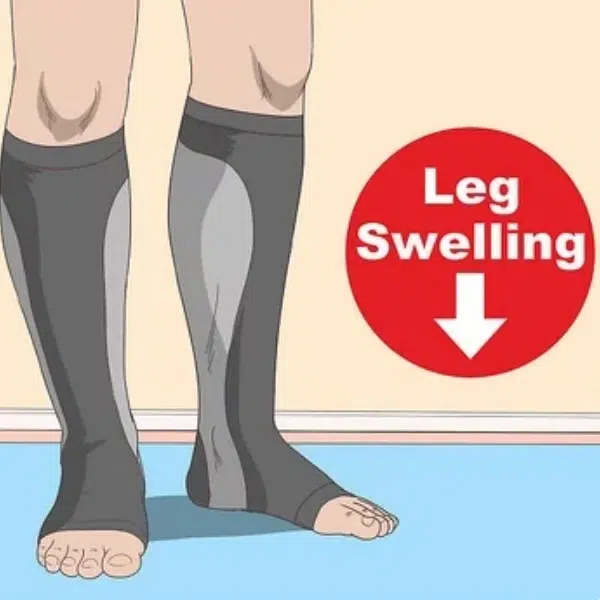
Source:https://www.wikihow.com/Reduce-Leg-Swelling
Enhanced Post-Surgical Vascular Health
Compression socks also help to improve post-surgical vascular health. Surgical procedures are recognized for causing damage to blood vessels and triggering inflammation, a well-known phenomenon that prompts the release of clotting factors.
Compression socks provide gentle pressure to the veins and reduce the occurrence of inflammation, which helps to protect vascular health by reducing the release of clotting factors. Thus, reducing the chances of developing post-surgical blood clots.
Enhanced Oxygenation in the Lower Limbs during Post-Surgical Recovery Period
Tissue oxygenation is directly linked with the improved blood circulation. Since compression socks are known to improve blood circulation within the lower limbs during the post-surgical recovery period, they also help to boost tissue oxygenation in the lower limbs. Thus, enhancing the efficacy of the recovery span.
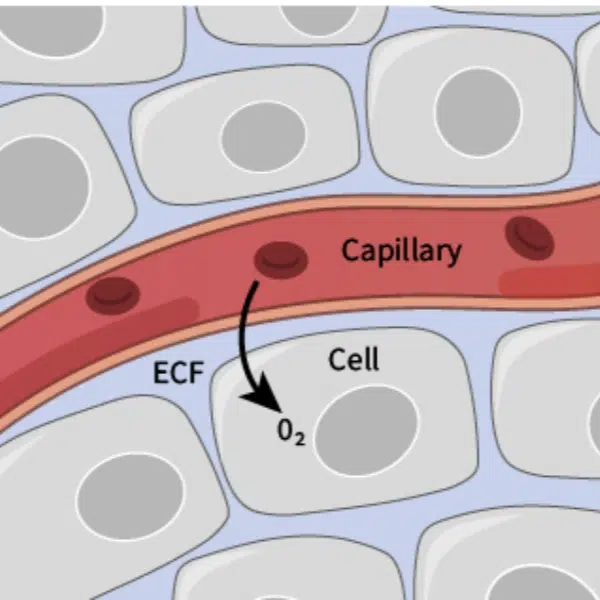
Source:https://www.adinstruments.com/blog/tissue-oxygen-telemetry-in-research
Wearing Perfect Compression Socks In Post-Surgical Recovery Period: How Surgical Compression Socks Can Be Improved?
Wearing compression stockings in the post-surgical recovery period will only be beneficial when you take care of some critical aspects of wearing compression socks. They are mentioned below:
Customized Size and Fit
Always wear compression stockings tailored to the individual’s customized size and fit based on their leg measurements. To get the exact size, you can use a 3D scanning procedure.
It’s important to note here that selecting the correct size is crucial for maximizing the benefits of the compression gear. Wearing anything loose or too fit can be greatly hazardous.
Adjustable Compression at Different Sites
Make sure to wear graduated compression stockings that provide compression at specific sites.
Preferably, the compression should be the highest at the ankles, whereas it should decrease gradually while moving up to the knees.

Breathable and Moisture-Wicking Materials
Make sure to opt for breathable and moisture-absorbing fabrics. This is important if you’re looking to wear compression socks for longer periods, you should ensure that you do not disrupt the airflow to the legs.
Nylon and spandex-based compression socks are best recommended.
Perfect Compression Levels
Make sure to monitor the compression levels. Typically, 20-30 mmHg of compression is the best-suited compression level to be worn by patients during their post-surgical recovery period.
However, patients who are at a greater risk of developing blood clots can also use a firm compression level of above 30 mmHg upon their doctor’s recommendations.

Source:https://www.aamc.org/news/many-hospital-patients-doctors-are-house
FAQs
1) Can compression socks prevent post-surgical blood clots?
Yes! Compression socks help to prevent blood clots after surgery. They help to improve blood circulation, prevent blood pooling, reduce swelling, and enhance venous return from the legs to the heart, which are the key factors in preventing DVT after surgeries.
2) How effective are compression stockings at preventing blood clots after surgery?
Compression socks are extremely effective at preventing chronic venous insufficiency and post-surgical blood clots. According to recent research, along with anti-coagulants, blood thinners, and enhanced mobilization after surgery, compression socks are an essential tool for preventing the risks of DVT and PE.

Source:https://www.scottsdaleptperformance.com/physical-therapy-exercises-after-knee-surgery/
3) What is the best way to prevent blood clots after surgery?
The best way to prevent clots after surgery requires multiple interventions, which include wearing medical-grade compression socks, opting for early mobilization, taking anticoagulant medications, keeping yourself hydrated, and doing slow but sturdy leg exercises.
4) Can you sleep while wearing compression stockings?
Yes! You can sleep in a surgical compression stocking. You might be surprised to know healthcare providers often advise you to sleep in surgical stockings during the post-surgical recovery period.
5) How long should you wear compression stockings after hip replacement?
You should wear surgical stockings for around 2 to 6 weeks after hip replacement surgery. However, it is always best to consult your healthcare provider for better results.

Crux of the Matter
Patients, after having their surgeries, are at a higher risk of developing blood clots and medical conditions like DVT and PE due to prolonged periods of immobilization.
However, there’s no need for concern, as compression socks serve as the best tools to prevent those life-threatening clots with their specular qualities like improving blood flow, enhancing venous return, preventing blood pooling and stasis, preventing swelling and edema, and maintaining venous pressure within the legs during the post-surgical recovery period.
Nevertheless, it is always best to consult your healthcare provider for accurate usage and best results.
We hope this information has addressed your concerns. Stay safe and healthy as you recover!

